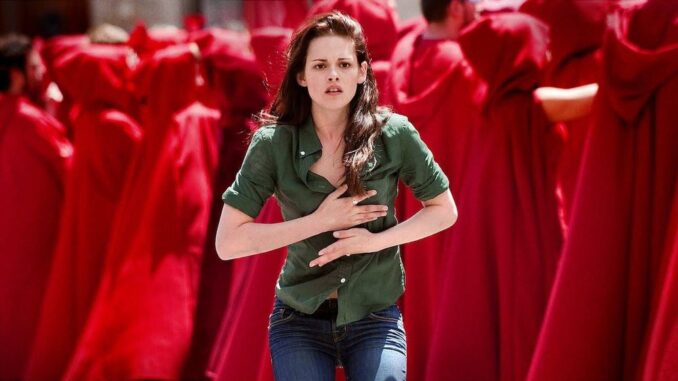
The Undying Spark: Why the Twilight Saga Still Commands a Devoted Following
In the annals of pop culture, few phenomena have sparked as much passionate devotion—and equally fervent derision—as Stephenie Meyer’s Twilight Saga. Emerging from the mist-shrouded forests of Forks, Washington, in 2005, the tale of a mortal girl, an enigmatic vampire, and a fiery werewolf swiftly became a global sensation. Years after the final book was published and the last film flickered across cinema screens, the Twilight flame, rather than extinguishing, merely settled into a steady, persistent glow. The fervent debate may have softened into nostalgic affection, but the fanbase remains remarkably robust, a testament not just to a fleeting trend, but to the saga’s surprising resonance with enduring human desires.
At its core, the unyielding grip of Twilight lies in its sweeping, all-consuming romance. Long before social media declared ships and OTPs, Edward Cullen and Bella Swan defined an entire generation's ideal of first love, forbidden love, and epic, soul-mate devotion. It was the magnetic pull between the perpetually tormented Edward, with his iridescent skin and centuries of wisdom, and the perpetually clumsy Bella, whose quiet strength anchored his chaotic existence, that first snared millions. This wasn't just a crush; it was a love so profound it transcended species, risked death, and promised eternity. For countless readers, particularly young women navigating the tumultuous waters of adolescence, this idealized, passionate bond offered a potent fantasy of being seen, chosen, and loved unconditionally, flaws and all. The added layer of the Jacob Black love triangle, representing a more grounded, sunlit alternative, only intensified the emotional stakes, forcing fans to pick a side and invest deeply in the outcome.
Beyond the heart-stopping romance, the saga offered a tantalizing gateway into a realm of exhilarating escapism. Before Twilight, vampires were often monstrous, bestial figures; Meyer reimagined them as beautiful, tragic, and dangerously alluring, capable of dazzling speed, superhuman strength, and sparkling in the sunlight. Werewolves, too, were elevated from lycanthropic horror to a fierce, protective brotherhood. The mundane, rain-soaked landscape of Forks became a canvas for extraordinary events, a secret world hidden just beneath the surface of everyday life. This blend of the familiar with the fantastically supernatural allowed readers to project themselves into a world where true love could literally defy death, where ancient conflicts played out in sleepy high schools, and where the ordinary became infused with magic. In a world often devoid of obvious wonder, Twilight provided a potent, easily accessible fantasy, a chance to dream of a love worth fighting, and even dying, for.
Perhaps most powerfully, Bella Swan herself served as the ultimate everygirl protagonist, a relatable blank slate onto whom millions could project their own insecurities, hopes, and desires. Bella was awkward, prone to accidents, preferred books to popularity, and often felt out of place. She wasn't an extraordinary hero or a chosen one with inherent powers; she was simply Bella. Yet, it was this seemingly ordinary girl who captured the attention of a centuries-old vampire, ignited the devotion of a powerful werewolf, and eventually ascended to a power that rivaled her superhuman counterparts. Her journey from human uncertainty to vampiric strength resonated deeply, offering a powerful message: even the most unassuming among us can be the center of an epic tale, worthy of profound love and incredible transformation. This relatability made the extraordinary accessible, allowing readers to imagine themselves not just observing the fantasy, but living it.
Finally, and crucially, the Twilight Saga fostered an incredibly vibrant and enduring community built on nostalgia and shared experience. For many, these books and films were a pivotal part of their formative years. They devoured the books in late-night sessions, debated "Team Edward" versus "Team Jacob" with feverish intensity, and queued for hours for midnight movie premieres. This shared, collective experience created a powerful bond among fans. Even years later, revisiting the saga isn't just about the plot; it's about re-experiencing a specific time in their lives, a comfort read that transports them back to simpler days of passionate first loves and thrilling literary escapades. Online forums, fanfiction archives, and social media groups continue to thrive, fuelled by re-reads, new adaptations (like the potential TV series), and the sheer joy of revisiting a world that once captured their imaginations so completely. The saga isn't just a series of books; it's a touchstone, a collective memory, and a comfort blanket for those who found solace and excitement within its pages.
In conclusion, the Twilight Saga's enduring fanbase is no accident. It’s a testament to the timeless appeal of its core elements: a consuming, epic romance that promised eternal devotion; a lush, accessible supernatural world that offered exhilarating escape; a relatable protagonist who made the extraordinary feel within reach; and a powerful sense of nostalgia and community that continues to bind its followers. While critical appraisal may have been mixed, the saga undeniably tapped into a primal chord of yearning for love, adventure, and belonging. For the millions who still find themselves drawn back to Forks, the spark has never truly faded; it merely waits to be rekindled with each re-read, each re-watch, a testament to a pop culture phenomenon that dared to be loved, no matter the critics.
